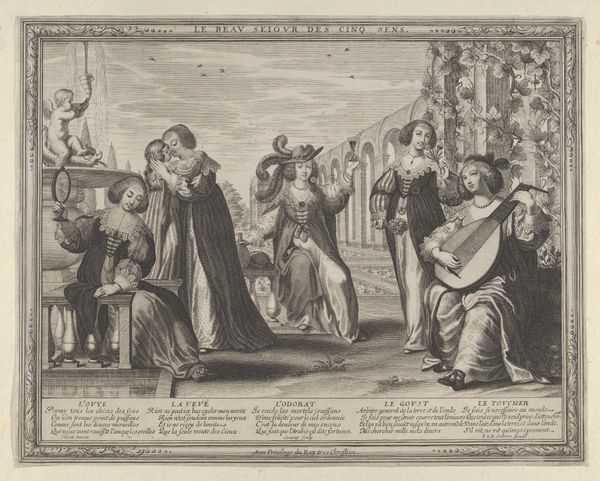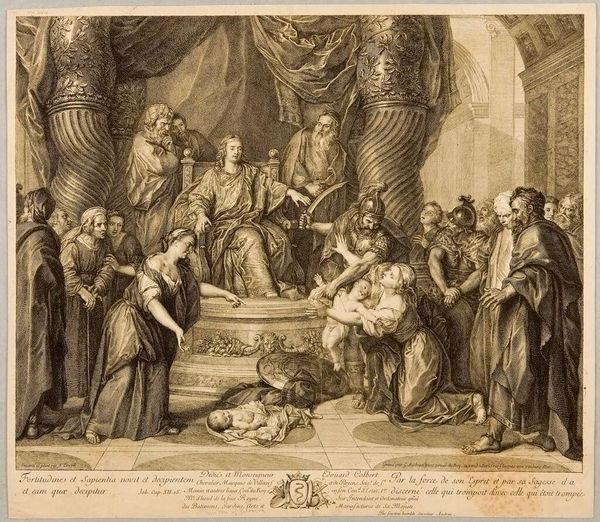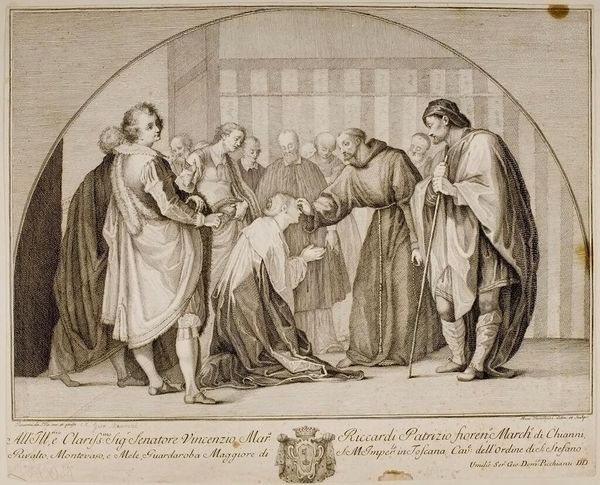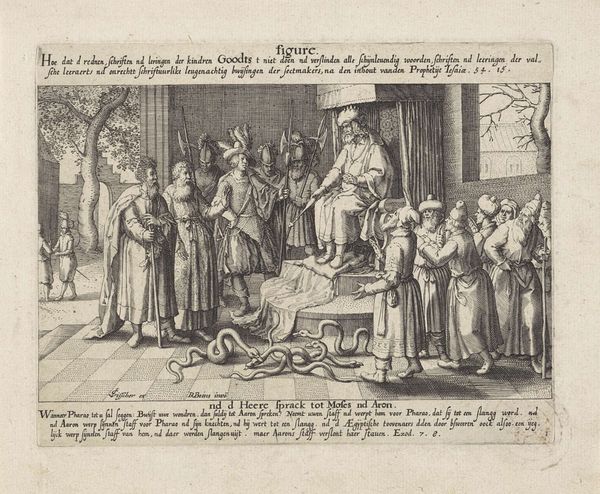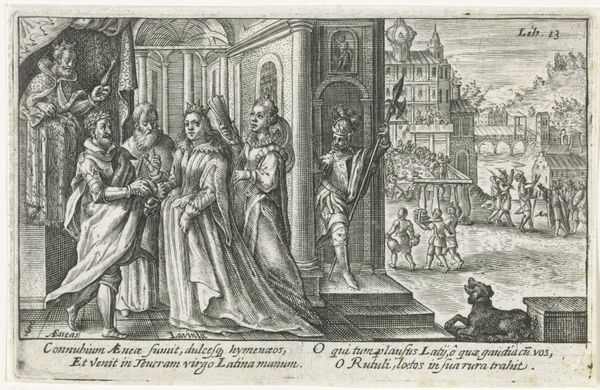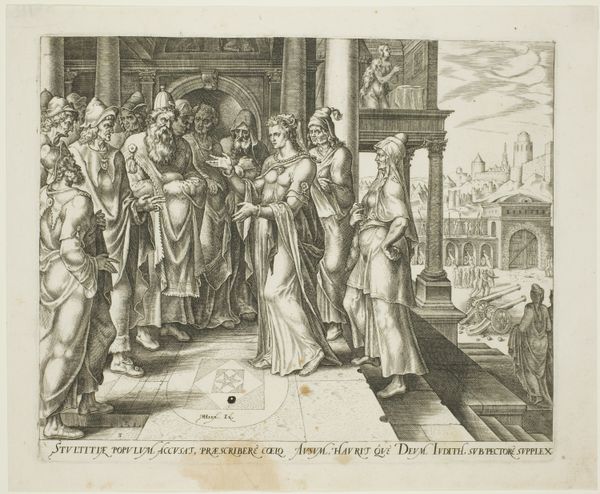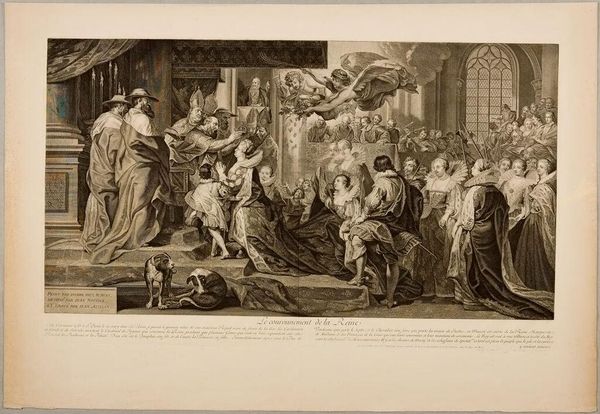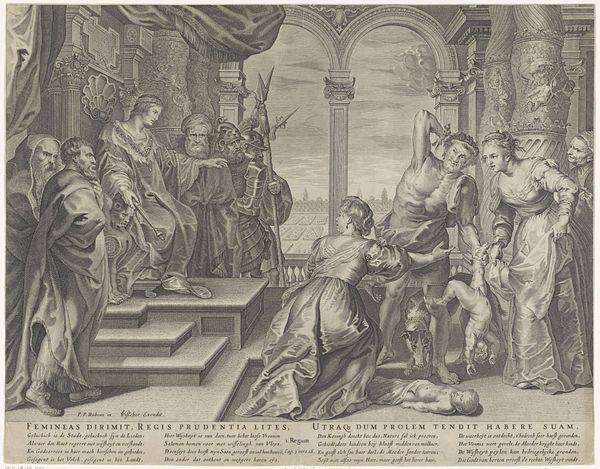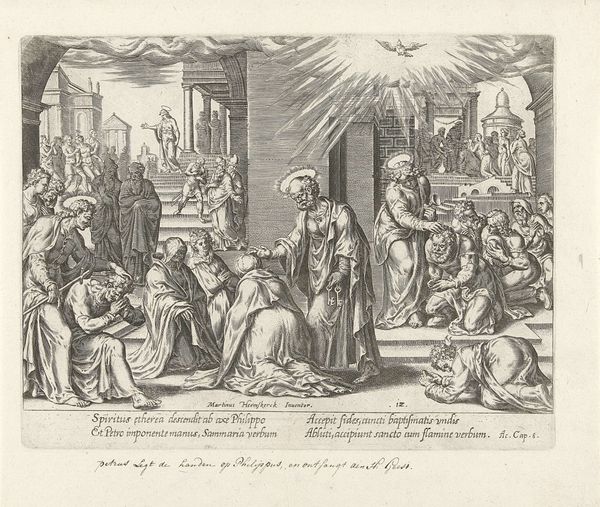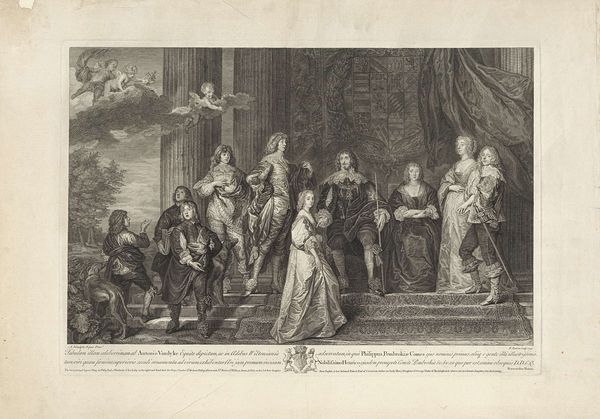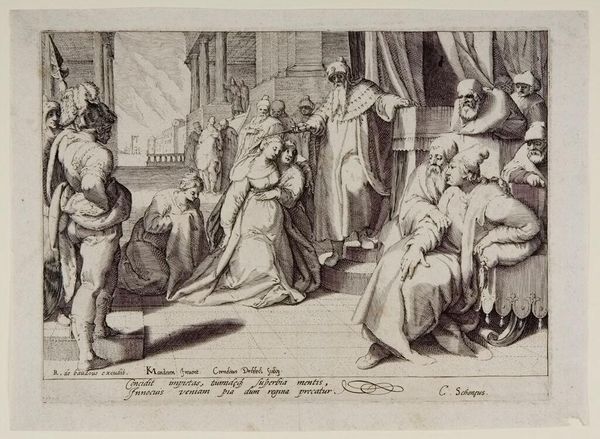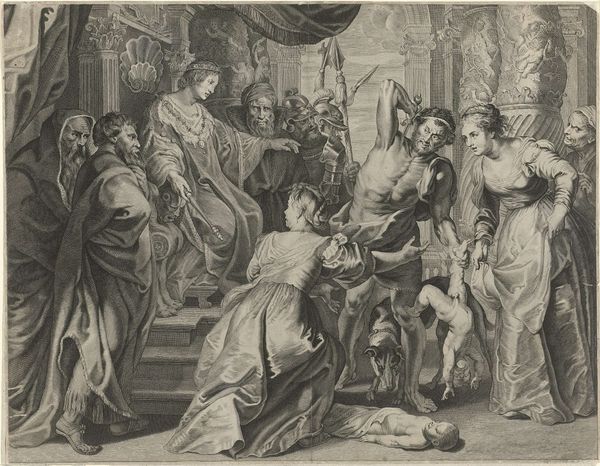
The Beautiful Abode of the Five Senses c. 17th century
Copyright: CC0 1.0
Curator: This etching, "The Beautiful Abode of the Five Senses," was created around the early to mid-17th century by the French artist Jean Couvay. Editor: My first impression is a little melancholy. It's a busy composition, but the monochrome and delicate lines evoke a sense of introspection rather than celebration. Curator: It is interesting that you mention melancholy. Couvay uses these figures to represent the five senses—hearing, sight, smell, taste, and touch—and there’s a subtle commentary on the fleeting nature of sensory pleasures. Editor: The production of engravings like this relied on specialized labor. The engraver, Couvay in this case, meticulously etched lines into a metal plate, a process demanding skill, time, and specific tools. Each print then became a commodity, consumed by a burgeoning art market. Curator: Exactly. It invites us to consider how we experience the world. Do we truly savor these sensory experiences, or do they slip through our fingers like the delicate scent of a flower fading away? Editor: For me, it highlights the intersection of artistic skill, material culture, and social consumption in early modern Europe. It's not just about aesthetic pleasure, but also about labor and the material conditions of art production. Curator: A poignant thought to hold as we move along our journey. Editor: Agreed. It really forces us to look and think again about what's right in front of us.
Comments
No comments
Be the first to comment and join the conversation on the ultimate creative platform.
